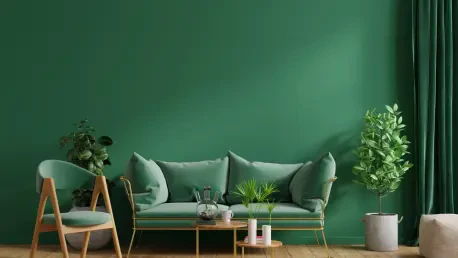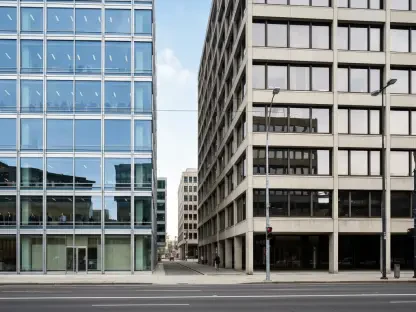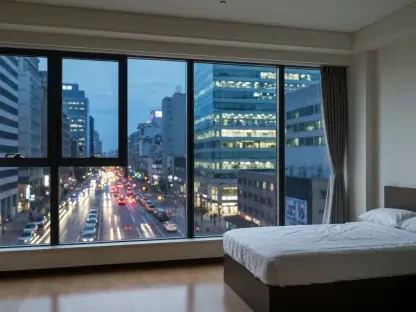In the ever-evolving world of interior design, the color green has emerged as a transformative factor, redefining how spaces are conceived and experienced. With its diverse spectrum—from soft pastels to intense verdant hues—green transcends the traditional palette, offering elegance, serenity, and a sense of connection to nature. Green’s diverse applications have allowed designers to harness its versatile nature to evoke emotions ranging from calm and tranquility to vibrancy and dynamism. As preferences pivot towards more eco-conscious and biophilic designs, green serves as a bridge, linking interiors with the ever-important themes of ecological awareness and natural aesthetics. This ongoing influence by green hues reflects broader movements in design aimed at creating harmonious, sustainable, and sensory-rich environments.
Versatility of Green in Interior Design
One of the most compelling aspects of green in interior design is its unparalleled versatility, which is reshaping aesthetic boundaries across diverse spaces. Designers increasingly favor green, not just for its visual appeal but also for its ability to function both as a neutral tone and as a dramatic statement. This dual capability facilitates its use in contrasting design paradigms, from the opulent to the understated. Sage and muted greens have become popular choices for spaces demanding calm and sophistication, offering the soothing qualities traditionally associated with neutral tones. As a backdrop, these shades serve to highlight architectural features or design elements. Meanwhile, deeper shades such as emerald or olive inject vitality into interiors, becoming focal points that draw attention and elicit emotional responses.
The adaptability of green further extends to its pairability with other colors, allowing it to coexist seamlessly with both warm and cool tones. Green is often used alongside complementary hues like pinks and blues to create dynamic contrasts or alongside grays and whites to develop understated elegance. This makes it an ideal choice for designers aiming to unify a space, providing flexibility without compromising style. The varied tonal range of green supports a broad spectrum of aesthetic goals, from enhancing historical interiors to modern minimalist designs. Through its transformative properties, green proves to be an essential player in modern interior design, offering a sustainable and stylish choice that echoes the natural world.
Cultural and Environmental Impact
Green’s impact in interior design is not limited to aesthetics; it also resonates with deeper cultural and environmental narratives. As societies increasingly embrace sustainability, green serves not only as a color choice but as a statement reflecting eco-friendly practices and the biophilic design movement. The biophilic approach emphasizes integrating natural elements into urban environments, thereby fostering a connection to nature that supports mental and physical well-being. Incorporating green into interior spaces enhances this connection, allowing for the creation of environments that are both nourishing and revitalizing.
The cultural significance of green varies globally, manifesting in unique interpretations and styles. In different regions, color choices are influenced by local landscapes and traditional practices. For instance, green might reflect lush countryside or verdant forests, affecting its application in design. This cultural layering enriches the tapestry of global interior design, allowing green to function as a universal language of nature while respecting regional identities. From modern urban spaces in metropolitan cities to rustic settings in rural areas, green blends seamlessly with both cutting-edge technologies and centuries-old traditions. These applications highlight green’s role as a connector bridging past and future, human and nature.
Green as a Psychological Influence
The psychological effects of color significantly shape human experience, and green’s influence in this domain is profound. Commonly associated with peace, rejuvenation, and balance, green evokes a sense of harmony and equilibrium, making it a favored choice for spaces intended to nurture relaxation and recovery. In residential settings, green can transform bedrooms and living areas into sanctuaries promoting calm, while in office environments, it can aid in reducing stress and boosting creativity. This dual capacity to restore and inspire positions green as a critical component in designing environments attuned to human well-being.
Recent studies confirm the positive psychological impact of green spaces, particularly in urbanized settings where natural landscapes are scarce. By incorporating green design elements—whether through paint, textiles, or living plant installations—designers are effectively enhancing interior environments to address the desire for closeness to nature. The presence of green can also stimulate a feeling of spaciousness and depth, enhancing the perceived dimensions of interior spaces without physically altering them. This ability to manipulate perception without structural change makes green a practical choice for designing small or confined spaces.
Future Considerations
Green in interior design is gaining significant attention due to its unmatched versatility, fundamentally altering aesthetic standards across various spaces. Designers are gravitating towards green not solely for its visual appeal but for its dual ability to act as both a neutral backdrop and a bold statement. This quality allows it to fit into contrasting design styles, from lavish to minimalist. Soft hues like sage and muted greens are favored in areas where tranquility and elegance are desired, providing a calming effect similar to neutral tones. These shades can accentuate architectural features and design elements effectively. In contrast, richer shades like emerald and olive add a burst of energy to interiors, becoming focal points that draw the eye and evoke emotion.
Green’s adaptability extends to its ease of pairing with other colors, making it a perfect candidate to harmonize with both warm and cool tones. It often pairs with complementary colors like pinks and blues for striking contrasts or with grays and whites for a subtle sophistication. This flexibility makes green an excellent choice for designers aiming to achieve cohesion within a space without sacrificing style. The broad range of green shades supports diverse aesthetic goals, enhancing anything from traditional interiors to modern minimalist designs. Through its transformative nature, green proves to be a crucial element in contemporary interior design, blending sustainability with style while echoing the natural environment.









